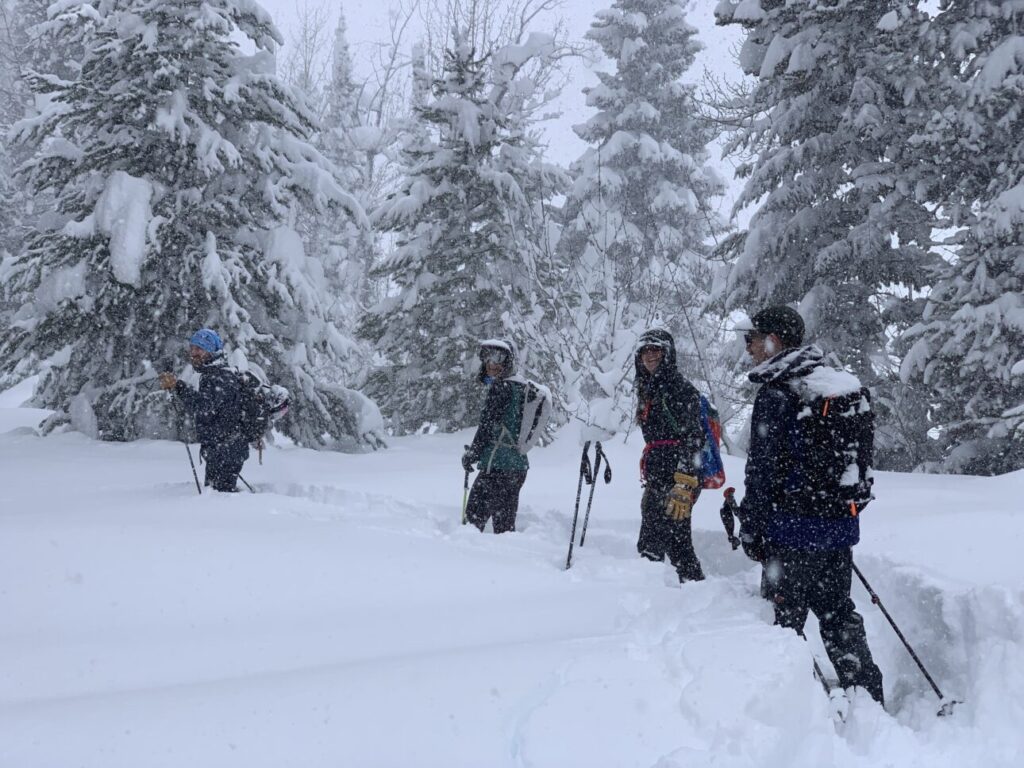
Friends from where I grew up (near Pittsburgh), often ask how my wife, Dimmie and I stand the winters out here in the hinterlands. Answering that question is never easy because it is innocently based in ignorance. They simply don’t understand winter out west. And when I tell them a sunny fifteen-degree day in Jackson Hole can feel warm—I can see by the look on their faces that they don’t believe me.
That’s okay because frankly I have a stereotypical view of winter in Pennsylvania and the Northeast. That is one long, unremitting season of battleship gray. I admit, that can’t possibly be accurate. There must be sunny, fifteen-degree winter days in Pennsylvania, but I confess I don’t remember them from my childhood. Then it hit me recently like a ton of bricks (I’ve never understood that expression, wouldn’t a single brick do the trick?) when I was saying TGIF—thank God it’s February—to a barista. There are really four seasons to our winter, each lasting approximately six weeks.
Fall/Winter
We first have Fall/Winter (Fanter?) encompassing November and early December. We get snow but it rarely lasts in the valley. Days are moderately cold but not frigid.
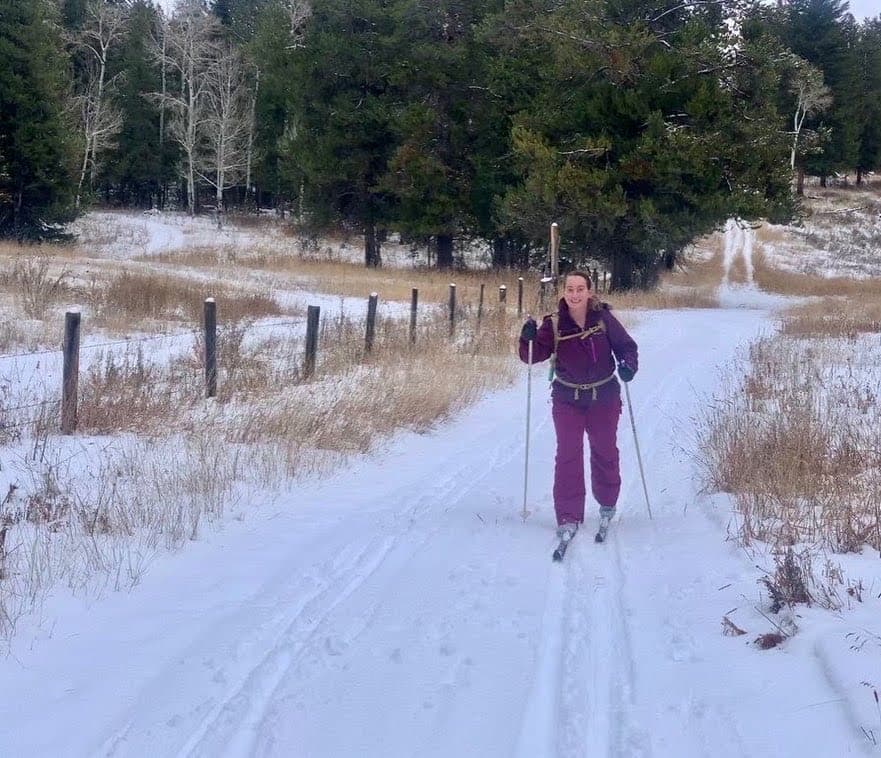
Deep Winter
Then from mid-December through January, we have Deep Winter. This year we enjoyed a fair amount of snow and yet temps often dipped below zero. Deep winter ended with a bang according to Jim Woodmency on January 31, 2023 when temperatures hit 33 degrees below zero, the coldest in Jackson in 33 years. Some Deep Winter days never got above zero.
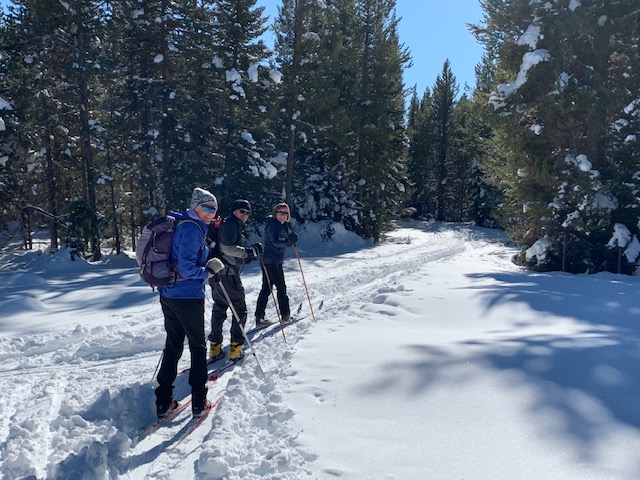
Combined with the “short” days and “long” nights that stretch is really the only part of our winter that truly is tough and often bleak. It can even be hard on some folks to get out and ski or snowshoe. But we can still enjoy the odd sunny day.
As Jim Woodmency astutely pointed out regarding Groundhog Day in his JHNG “Mountain Weather” article of 2/8/23, “…regardless of whether a large rodent saw his shadow that day, there is always going to be six more weeks of winter.”
Moderate Winter
Deep Winter is followed by six weeks of Moderate Winter taking us to mid-March during which true snow aficionados notice the composition of the snow changing.
Because of the warmer temperatures, snow holds more moisture which provides Nordic skiers better grip or kick. During this period, we enjoy the odd day of skiing hatless and wearing fewer layers. There are occasional days of thawing and snow melt. Still, we are blessed with lots of snow (February and March can be our snowiest months.) and generally below freezing (32 F) temperatures.
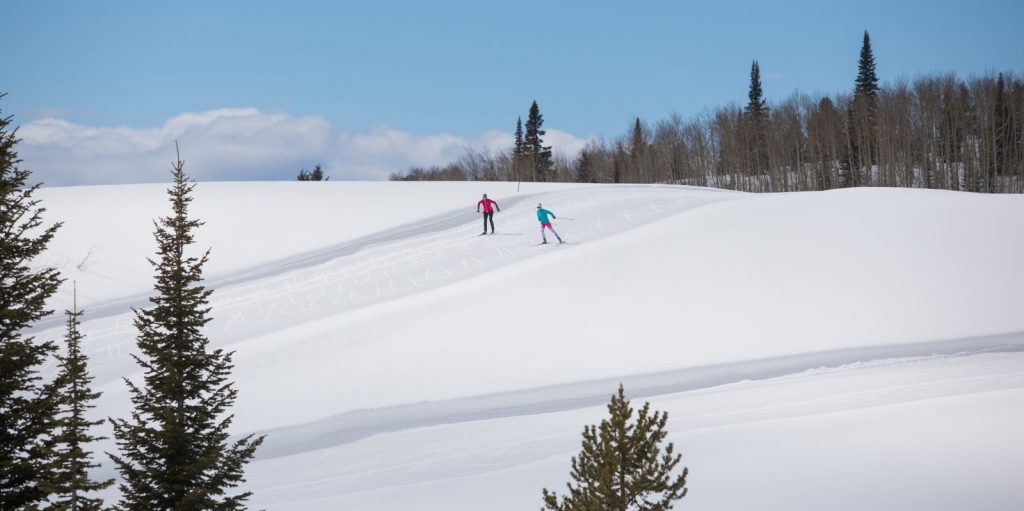
According to the National Snow and Ice Data Center, “While it can be too warm to snow, it cannot be too cold to snow. Snow can occur even at incredibly low temperatures, as long as there is some source of moisture and some way to lift or cool the air. It is true, however, that most heavy snowfalls occur when there is relatively warm air near the ground—typically -9°C (15°F) or warmer—since warmer air can hold more water vapor.”
Spring-Winter
Finally, from mid-March until early May we experience Spring/Winter. (Sprinter?) Snow gets slushy by noon, jackets and often much other outer clothing is tossed off by skiers, the ski areas eventually close in April, losing skiers long before they loose snow and grooming of Nordic tracks ends.
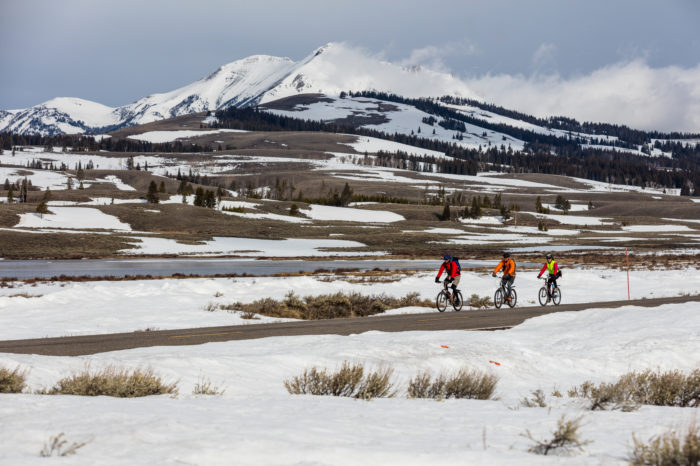
In town, daffodils and crocus are coming up and that is when Nordic skiers begin migrating north into Grand Teton National Park (sometimes on bicycles) in search of crust cruising conditions—generally recognized as the icing on the Nordic cake (no pun intended).
By now back East, of course, trees are leafing out and backyard grills are being fired up. There is nothing I like more than telling an eastern friend on a warming May morning that I’m going skiing in Grand Teton National Park. Inevitably they will say something to the effect of, “I feel so sorry for you, you have such long winters.”
Article by Gregory Zeigler


